Practice can contribute to food security, increased income for a rapidly expanding population
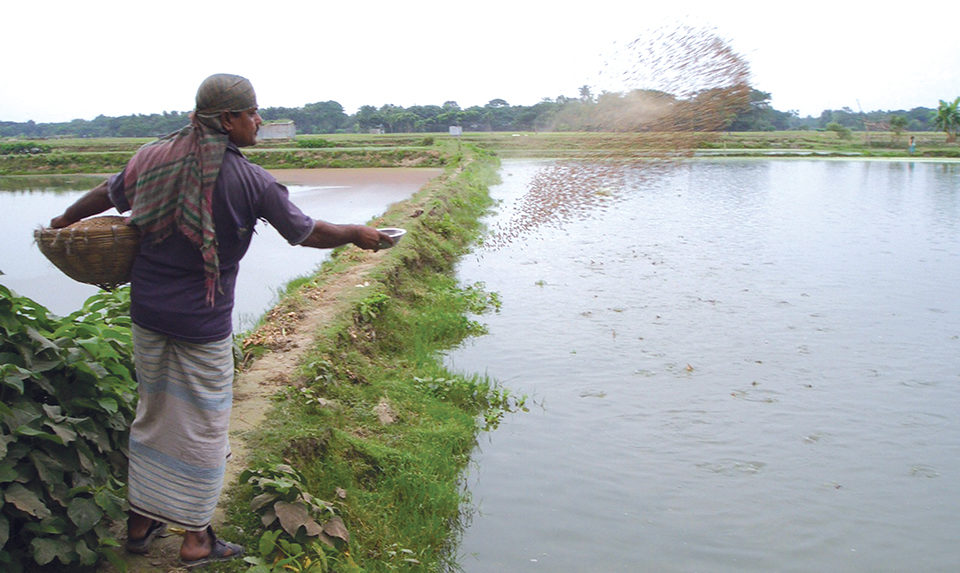
The traditional polyculture of indigenous Indian major carps in Bangladesh has been increasingly diversified over the past few decades through the introduction of exotic species of fish, initially carps and more recently tilapia and catfish. Various phases in the evolution of this polyculture can be recognized in relation to socioeconomic development and intensification.
Traditional carp polyculture
Fish culture has a long history in Bangladesh based on stocking wild seed of Indian major carps. This practice still takes place today, although it is now dwarfed by growout production from hatchery seed. The Major Carp Spawn Fishery uses fixed nets to capture 5-day-old larvae from the Padma and Brahmaputra/Jamuna river systems for stocking in ponds. The primary carp species are Catla catla, Cirrhinus mrigala and Labeo rohita.
Millions of ponds in Bangladesh were originally built as borrow pits for soil to raise the ground level of village houses to minimize flooding. Most of these ponds were not used for fish culture until relatively recently. Only more prosperous farming households could afford the wild fish seed to stock their ponds, and fish were raised extensively without fertilization or feeding. Correspondingly low yields provided fish mainly for domestic consumption rather than sale.
Improved carp polyculture
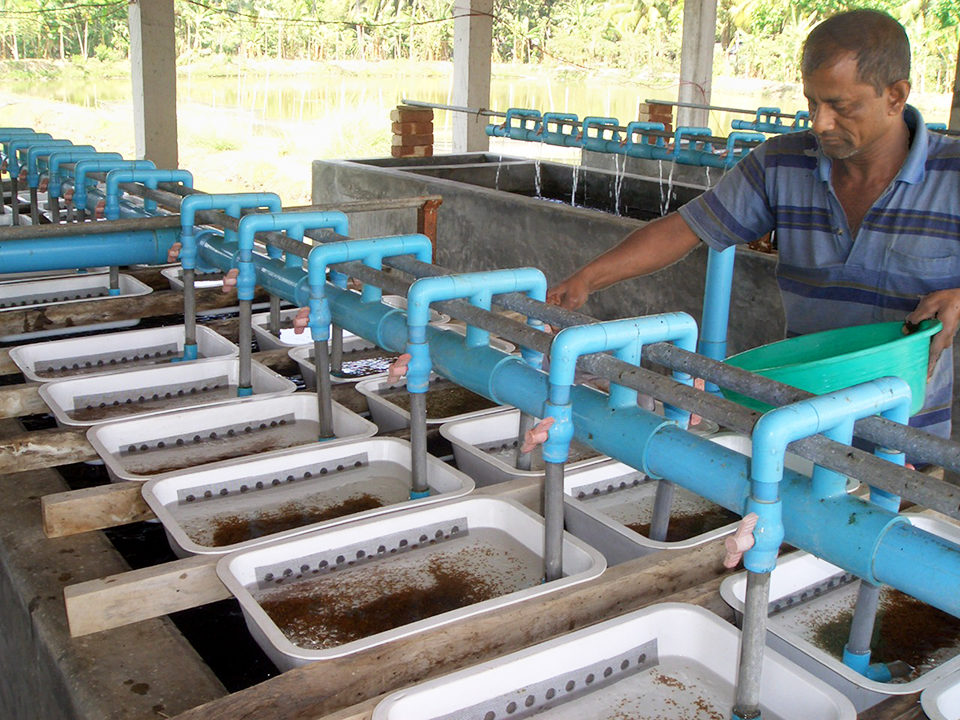
Aquaculture increased in importance in the early 1980s following the successful artificial breeding of the three native species of Indian major carp and various exotic carps introduced from the 1960s onwards: common carp (Cyprinus carpio), grass carp (Ctenopharyngodon idella), silver carp (Hypophthalmichthys molitrix) and silver barbs (Barbichthys gonionotus). The introduction of semi-intensive pond management, with stimulation of natural pond organisms by fertilization with organic manure and inorganic fertilizers, and supplementation with rice bran and mustard oil cake, led to a marked increase in fish yields.
Many development projects funded by bilateral and multilateral agencies have helped promote improved small-scale carp polyculture in Bangladesh, but the Danish-funded Mymensingh Aquaculture Extension Project (MAEP) has probably had the most impact on raising the welfare of poor farming households through carp polyculture.
MAEP provided training to more than 100,000 households, with average annual extrapolated fish yields increasing from 1.0 to 3.3 metric tons (MT) per hectare during the project period. Poor farming households sold about 80 percent and consumed about 20 percent of their fish harvests, which provided both socioeconomic benefits and household nutrition.
Tilapia polyculture
Nile tilapia (Oreochromis niloticus) were first introduced 30 years ago, but market acceptance has been slow until recently. This was due to early experiences with (O. mossambicus), which bred precociously and led to harvests of small fish. Furthermore, in contrast to exotic carps that could be readily incorporated into the well-established carp hatchery and seed-trading infrastructure, tilapia distribution was constrained by the absence of systems for mass seed production and distribution.
The first commercial tilapia hatchery was set up in 1992 in Chittagong by United Aqua Farms, a nongovernmental organization with a business approach to helping the poor. Their aim is to establish a national tilapia industry by selling seed and feed through eight regional centers, each serving eight districts, to cover all 64 districts in the country.
Nile tilapia fry are sent by road from Chittagong and a new hatchery in Jessore to the regional centers to be nursed to fingerlings prior to district distribution. Model farms with integration of feed lot poultry and dairy cattle, and vegetables raised on elevated beds, were established at regional centers. Training is provided at the centers in tilapia grow-out using locally appropriate integrated technologies.
United Aqua Farms has had a major influence in creating demand for tilapia in Bangladesh. The Chittagong hatchery produces 28 million sex-reversed tilapia fingerlings annually, and its new Jessore hatchery has a capacity to produce 40 million. The Reliance Aqua Farms in Mymensingh has a target production of 100 million tilapia fingerlings per year. Fingerlings are now available in many areas of Bangladesh through about 30 tilapia hatcheries, all with intensive hapa-based breeding systems.
As strategies for decentralized tilapia seed production by poor rice-farming households have also been introduced in Bangladesh areas remote from large-scale hatcheries, tilapia are likely to form an increasingly important component of carp polyculture as their acceptability as a food fish spreads.
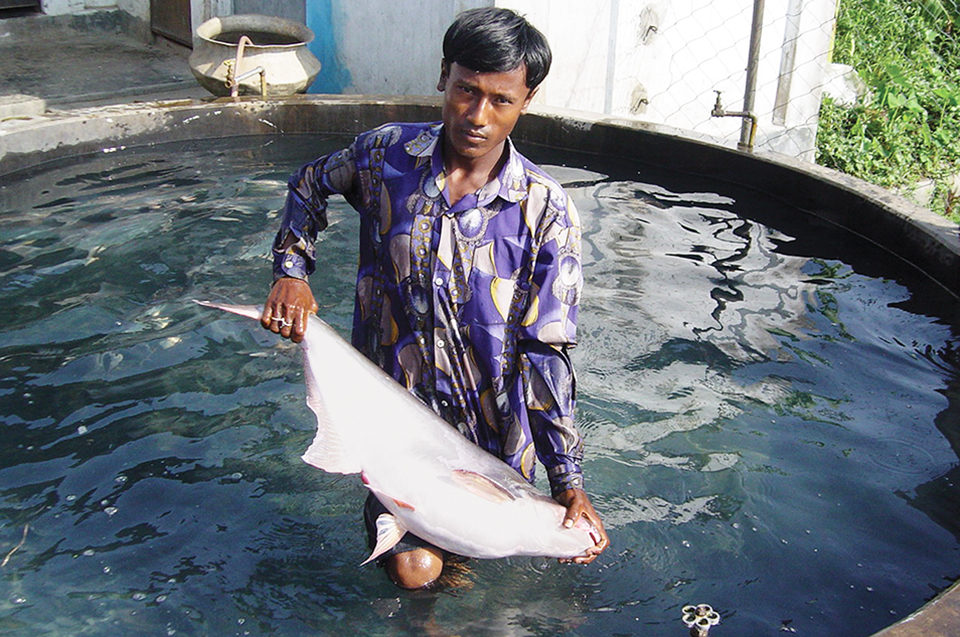
Intensive polyculture
Commercial aquaculture with formulated feed is expanding rapidly in Bangladesh, especially in Mymensingh. As more farmers turn to aquaculture for their main occupation, they raise fish intensively with sole use of formulated feed, as semi-intensive systems have relatively lower production and profitability than intensive systems. Thai pangas (Pangasius hypophthalmus) as well as tilapia are increasingly raised by better-off farmers in monoculture as well as polyculture.
Introduced in 1990, the culture of Thai pangas has expanded more rapidly than tilapia farming because the fish are similar in appearance to the high-value native pangas (P. pangasius). The Bangladesh government imported Thai pangas after unsuccessful attempts to breed local pangas and private pangas hatcheries are now established throughout the country.
Further favorable attributes of the air-breathing pangas are their high survival and growth rates at higher density than carps, with yields of 25 to 30 MT/ha/crop. Pangas culture is more profitable with less risk compared to other species, and also provides a quick return with the six-month crop.
Farmers usually prepare feeds by mincing ingredients, but are constrained by labor requirements and the inability to sun dry feed in rainy weather. Commercial aquafeeds are now available in some areas.
Pangas are commonly farmed in monoculture, but high rates of feeding led to the development of dense phytoplankton that caused pond surfaces to froth with green bubbles from intense photosynthesis. Farmers in Mymensingh developed polyculture to reduce the phytoplankton with 5 to 10 percent Indian major carps and 5 to 10 percent tilapia stocked in the 80 to 90 percent pangas-dominated culture systems. Farmers earlier tried Chinese silver carp to reduce algal blooms, as they grow rapidly through filtering phytoplankton, but replaced this species with tilapia, which are more resistant to low dissolved oxygen levels.
Pangas-dominated polyculture is used by both large-scale commercial farmers and small-scale, predominantly rice-farming households. Rice fields are increasingly being converted to ponds by both large- and small-scale farmers.
Looking forward
Polyculture of fish in ponds has the potential to contribute toward both the traditional fish component of the national diet and increased income for the rapidly expanding population of Bangladesh. The current population of 144 million is expected to increase by over 70 percent before it begins to decline toward the end of the century. Achieving significantly increased production will require both further expansion of pond area and increased pond productivity.
There is considerable potential for higher pond yields by increasing inputs of fertilizers, bran, and oil cakes in improved carp polyculture in many other areas of the country. The national average pond production could be increased by more than 50 percent, based on the MAEP experience. Both pangas and tilapia are likely to become an increasingly common part of the improved carp polyculture as more farmers learn the value of these two species.
The Bangladesh government is concerned that the trend of converting rice fields to fish ponds might threaten the major food staple rice. However, the conversion of up to 10 percent of Bangladesh’s rice fields to ponds would probably lead to a major improvement in the welfare of poor farmers and urban consumers, as fish is a more economically and nutritionally valuable crop than rice.
There is scope for expansion of intensive pangas-dominated polyculture, but it is unlikely to have relevance for most poor farming households because of the high costs for pangas seed and feed. Improved polyculture of carps is likely to continue to comprise most farmed fish production in Bangladesh for the foreseeable future.
Tilapia, though, are expected to be increasingly stocked with carps. They feed in several niches and can be raised in semi-intensive systems in polyculture with pond nutritional inputs sourced locally, for poor, as well as better-off farming households.
(Editor’s Note: This article was originally published in the January/February 2007 print edition of the Global Aquaculture Advocate.)
Now that you've reached the end of the article ...
… please consider supporting GSA’s mission to advance responsible seafood practices through education, advocacy and third-party assurances. The Advocate aims to document the evolution of responsible seafood practices and share the expansive knowledge of our vast network of contributors.
By becoming a Global Seafood Alliance member, you’re ensuring that all of the pre-competitive work we do through member benefits, resources and events can continue. Individual membership costs just $50 a year.
Not a GSA member? Join us.
Authors
-
Peter Edwards, Ph.D.
Emeritus Professor, AARM/SERD
Asian Institute of Technology
P.O. Box 4
Klong Luang, Thailand 12120[104,116,46,99,97,46,116,105,97,64,115,100,114,97,119,100,101,112]
-
Manjurul Karim, Ph.D.
Consultant, World Fish Center
Bangladesh and South Asia Office
Banani, Dhaka, Bangladesh
Tagged With
Related Posts
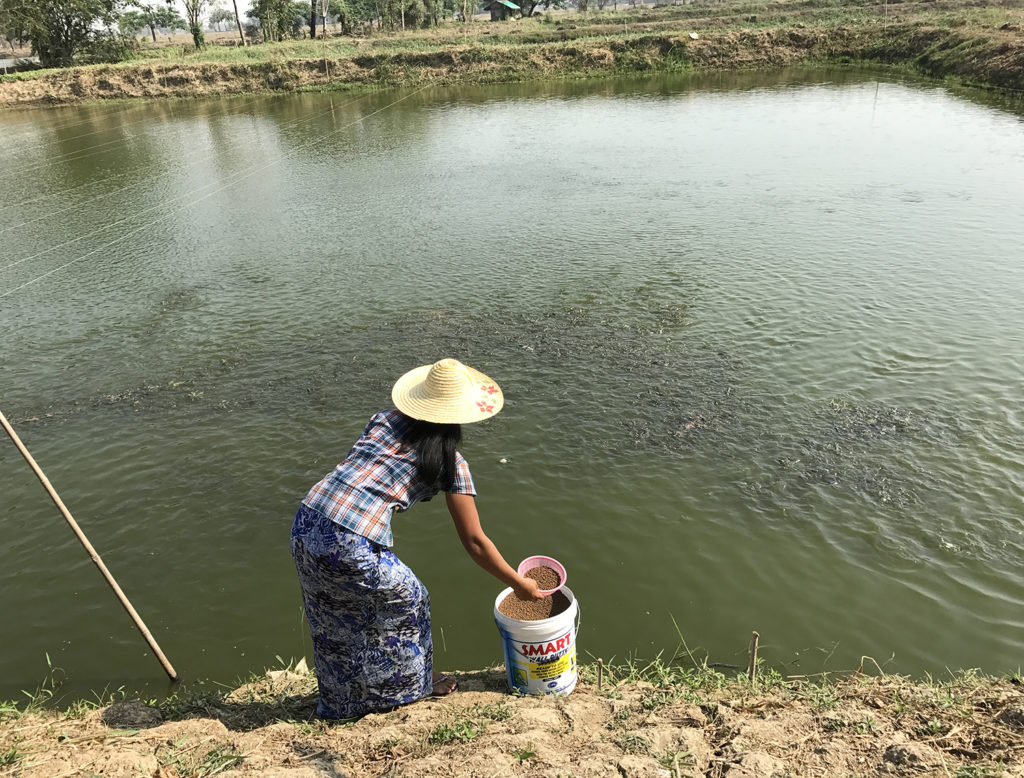
Responsibility
Giving a lift to tilapia farmers in Myanmar
The U.S. Soybean Export Council’s farm demonstrations, farmer education efforts and formulated feeds are boosting tilapia production in rural areas of Myanmar, where indigenous carp are more commonly raised.
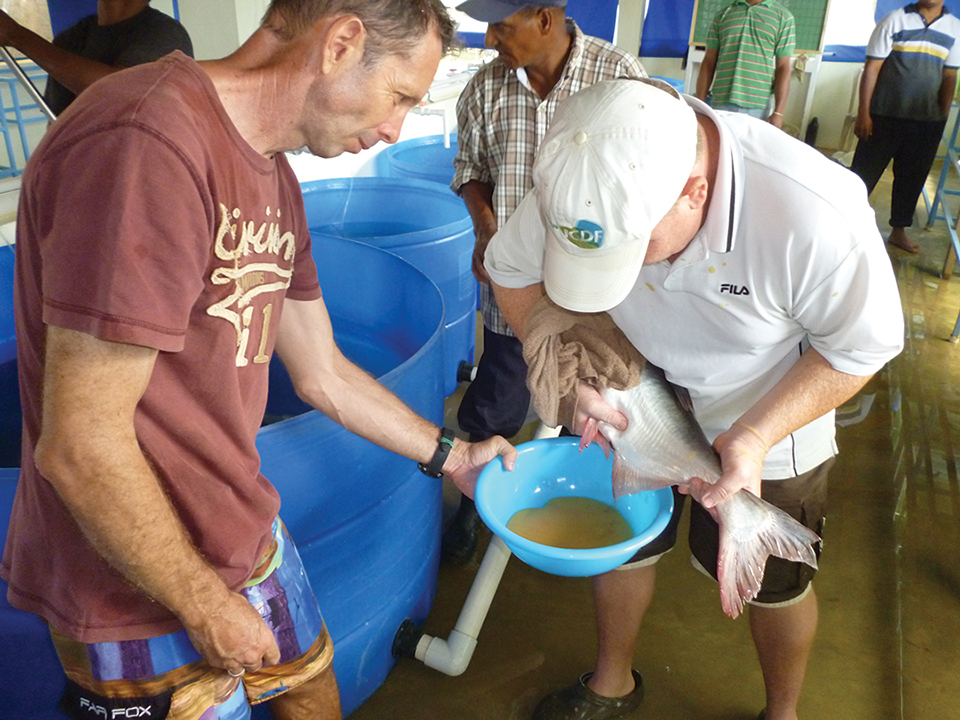
Health & Welfare
Pangasius culture in Western Hemisphere
Western nations consume considerable quantities of pangasius, yet its aquaculture in tropical regions of the hemisphere has not followed. Several countries have approved pangasius aquaculture, and to date no negative environmental impacts have been observed.
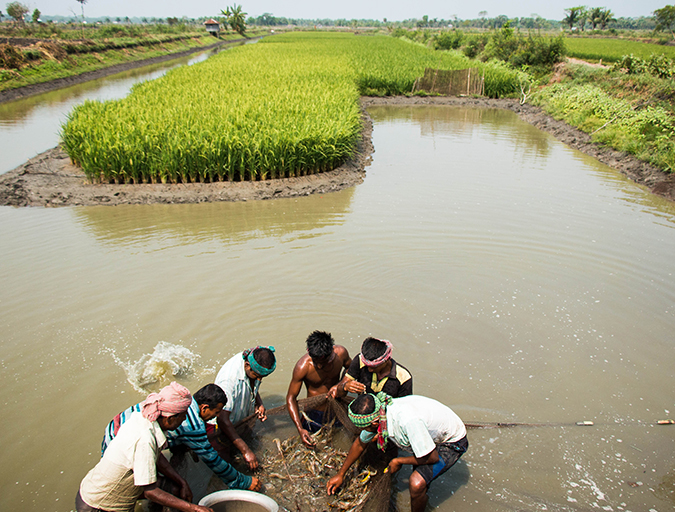
Responsibility
Rice-fish integration for high saline, coastal areas of Bangladesh
The Southwestern coastal zone of Bangladesh is agro-based and one of the world’s most populous, poverty-stricken and food-insecure regions. There is an opportunity to diversify and increase productivity by integrating rice with aquaculture during the monsoon season through adoption of water management practices.
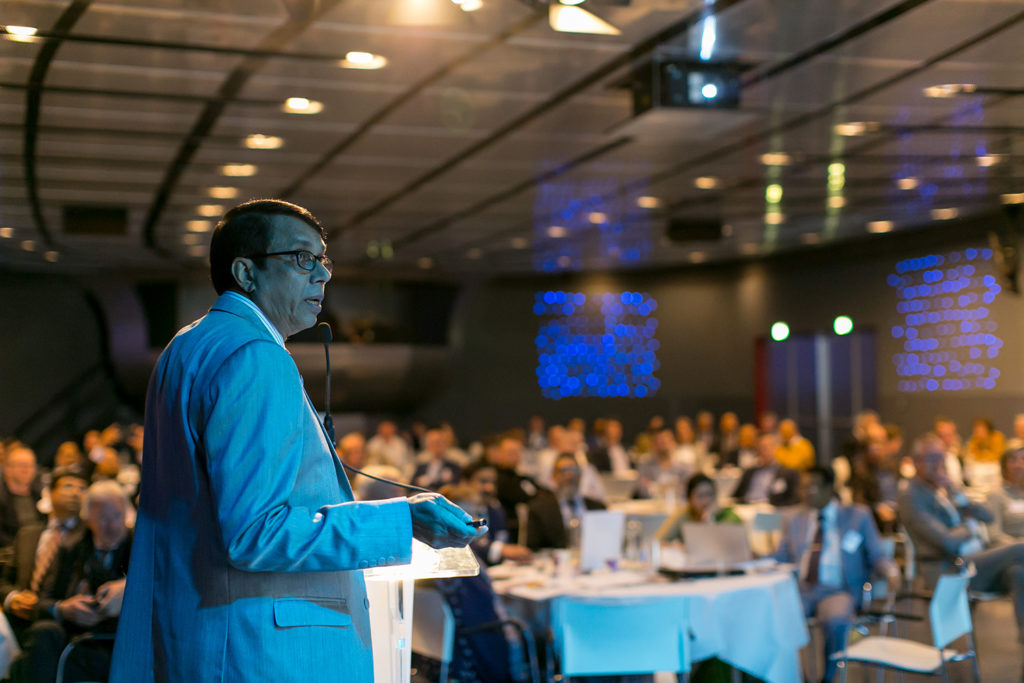
Intelligence
Bangladesh seeks more buck for its ‘bagda’
As more than 80 percent of Bangladeshi shrimp exports already go to EU markets, a consultation meeting involving buyers from the bloc and Bangladesh industry stakeholders and authorities was held at the end of last month in Utrecht, the Netherlands.



